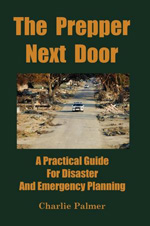In other posts we looked at the importance of isolation, PPE, decontamination, ways to minimize exposure to Ebola, anti-virus hygiene, incubation periods and quarantine. All of these are practical ways of fighting Ebola from a prepper’s standpoint.
This post will speculate about what plague will look like in the modern world. What would happen if half of all people didn’t show up for work? How long would a Ebola plague last? How would it likely end?
What would plague look like in the modern world? Nobody knows. We’ve never seen it. We’ve seen limited outbreaks in Africa. We’ve never seen a large scale plague hit America in the modern age. The closest we had is the Spanish Flu in 1918, which ultimately infected one-third of the world’s population and killed more people than WWI.
Experts classify Ebola as a slow spreading virus which baffles me because in parts of Africa the number of confirmed cases is doubling every 20 days. That’s like saying a jackrabbit is slow!
At those rates by the time 1 million people had the disease in America it would only take 160 more days to infect nearly every American. An Ebola plague would happen over 6 months or more. This isn’t something hitting quickly and ending quickly. It could easily last one or two years.
Worst case scenario in America is 150 million dead. That would be a huge hit but civilization would continue. We wouldn’t revert back to pioneer times.
Even with only a few million Americans infected, the blow to the economy would be devastating. Airports would close. Tourism and public entertainment would cease to exist. Shopping centers would be empty if not locked down. People would stay home and not spend money. With people not spending businesses would fail or close their doors. Many workers would be laid off. This would have a negative cascading effect on the economy.
In the Spanish Flu, people were stoic. They went about their work. I don’t know if that would happen today. Without income from employment, many people would run out of money to purchase food. Food would become scarce in supermarkets. Those with money would hoard food and buy up all they could. The distribution chain would be compromised by the lack of workers.
Would people loot? Police forces would have reduced capacity because many police officers would be ill. The military would be deployed to police major cities if looting became a problem. The government would distribute food if the traditional supply chain broke down. Would there be enough? Impossible to predict.
Local and city governments should still have the resources to keep water running. Private wells should be fine. Sewer systems should continue to work. The private companies providing electrical power would be challenged. Power outages could occur and take longer to repair.
Hospitals would be overwhelmed. America is committing $1 billion to fighting Ebola in Africa. If Ebola comes to America in a big way, the government will spend trillions.
A vaccine could be developed ending the plague. The virus could mutate into a less harmful variation. This is common. If a virus is too deadly it kills off its host and dies itself.
The experts believe Ebola is fully containable and these worse case scenarios won’t happen. What we can predict with certainty: There will be other viruses in the future and some could make Ebola look like the common cold. Ebola is a horrible virus which kills 50% of those infected. By virus standards, Ebola is slow spreading and isn’t transmitted through the air. There are more dangerous viruses out there which would be far more difficult to contain. Regardless of how the Ebola story unfolds, preppers should prepare for plagues and future infectious diseases.
Charlie Palmer, author The Prepper Next Door: A Practical Guide For Disaster And Emergency Planning
